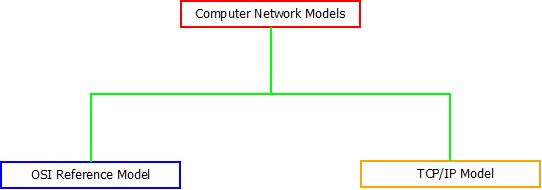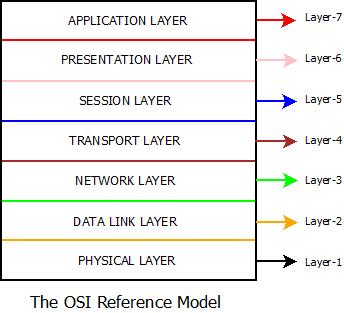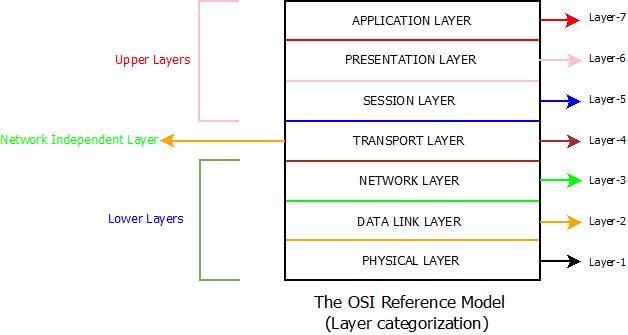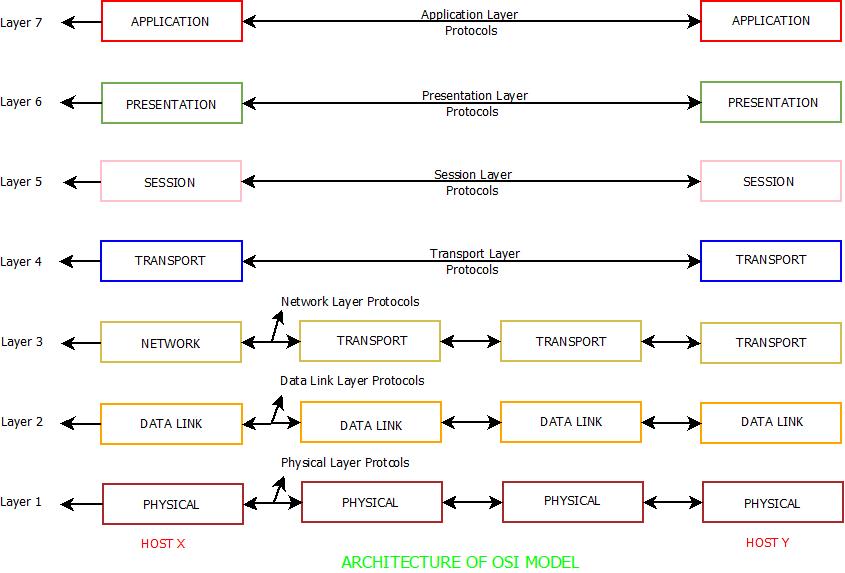Computer Network Models : Introduction
- For data communication to take place and two or more users can transmit data from one to other, a systematic approach is required. This approach enables users to communicate and transmit data through efficient and ordered path. It is implemented using models in computer networks and are known as computer network models.
- Computer network models are responsible for establishing a connection among the sender and receiver and transmitting the data in a smooth manner respectively.
- There are two computer network models i.e. OSI Model and TCP/IP Model on which the whole data communication process relies.

Computer Network Models
Computer Network Models : The OSI Reference Model
- The OSI Model is one of the general purpose networking or communication model among computer network models, which is responsible for establishing connection in an open manner between all the communicable devices present across the globe.
- OSI stands for “Open System Interconnection” and the name of this reference model was given by an organization known as “International Organization for Standardization”. The ISO is responsible for generating and promoting industrial and commercial standards applicable for all the users or universally.
- OSI model is called as “Open Source” because of its “fit anywhere” ability. Any connection can be established using the OSI model unless and until any protocols are not used as OSI model does not support protocol establishment. It runs without the use of protocols. All the networking devices which are open for communication can be connected together for data communication through the OSI model.
- Apart from OSI Model, another computer network models which is widely used is TCP/IP Model.
- OSI model having a layered architecture, allows easy data communication as each layer has predefined structured and functionalities.
- The functionalities are different for each layer and thus when combined together forms the OSI Model. There are in total seven layers in general purpose OSI model.

- The seven layers of OSI model are further categorized into Upper Layers, Network Independent Layer and Lower Layers. Physical Layer, Data link Layer and Network Layer are categorized as Lower Layers. Transport Layer as Network Independent Layer and Session Layer, Presentation Layer, Application Layer as Upper Layers.

- Also, these layers are sequenced in fixed manner and this sequence cannot be changed. It means, any alterations in the positions of the layers are not accepted.
Computer Network Models : Architecture And Layers of OSI Reference Model

A) The Physical Layer
- The Physical Layer is the bottom most layer and is associated with electrical, mechanical and functional aspects of the transmission media for information and receiving over internet.
B) The Data Link Layer
- The Data Link Layer is second from bottom and comes under the lower layer category. It ensures that the data must be synchronized, error detection and control are enabled.
C) The Network Layer
- The Network Layer is third from bottom in OSI model and is responsible for establishing data communication channel between multiple networks or devices or hosts or nodes.
D) The Transport Layer
- Transport Layer is the middle most layer in OSI model and it acts as Network Independent Layer. It has no idea about the functioning of lower layer i.e. physical, data link and network layers.
E) The Session Layer
- Session Layer is the fifth layer of OSI model and it provides appropriate sessions between users and entities, where user interacts. This layer can be used on the basis of resources available and it can be skipped too if not required.
- For example : Login Sessions in online banking.
F) The Presentation Layer
- This is the sixth layer of OSI model and it provides appropriate representation of data through various data presentation techniques.
G) The Application Layer
- Application Layer is the topmost layer of the OSI model and has the responsibility for providing interface between various users and application.
Computer Network Models : Advantages Of OSI Model
- The OSI Model being
one of the most widely used computer network models does posses some major
advantages which makes it so popular. These are :
- Each layer has its definite structure and functionality which makes OSI model simple and easy to use.
- It is a general purpose reference model that can be used for data communication.
- Connection oriented and connection-less services are supported.
- Connection between any type of devices or host or hardware or software is possible.
Computer Network Models : Disadvantages Of OSI Model
- Because of its inability to fit protocols, this model was replaced by TCP/IP Internet Model.
- Session and Presentation layers does not provide high end functionalities and are not of much use as compared to other layers.
- Connection oriented and connection-less services are supported.
- Connection between any type of devices or host or hardware or software is possible.